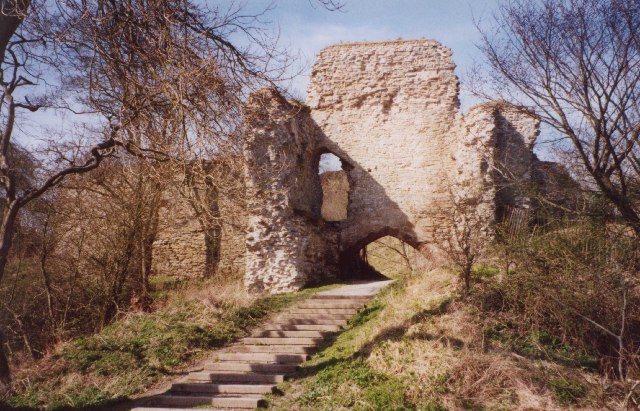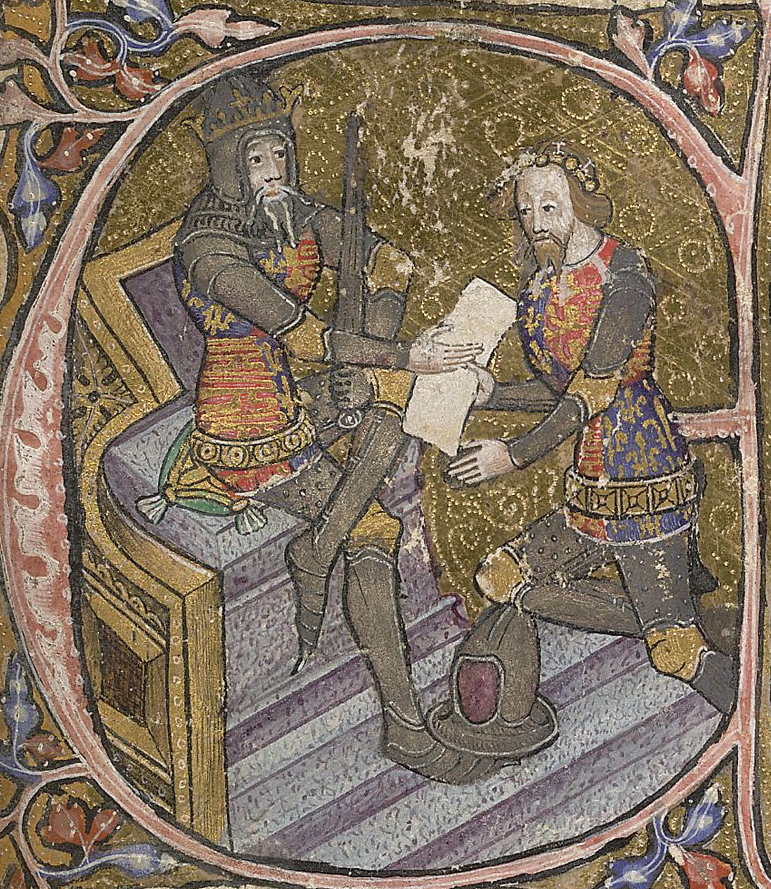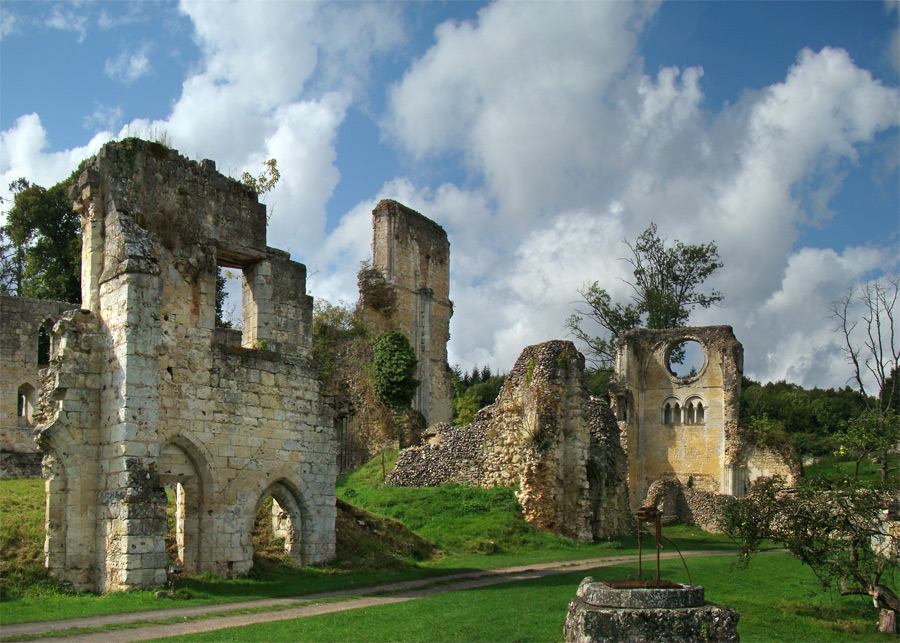|
Mortimer
Mortimer is an English surname. Norman origins The surname Mortimer has a Norman origin, deriving from the village of Mortemer, Seine-Maritime, Normandy. A Norman castle existed at Mortemer from an early point; one 11th century figure associated with the castle was Roger, lord of Mortemer, who fought in the Battle of Mortemer in 1054. The 12th century abbey of Mortemer at Lisors near Lyons-la-Forêt is assumed to share the same etymological origin, and was granted to the Cistercian order by Henry II in the 1180s. According to the toponymists Albert Dauzat and later, François de Beaurepaire, there are two possible explanations for such a place name: First, a small pond must have already existed before the land was given to the monks and have already been called ''Mortemer'' like the two other ''Mortemers'', because the word ''mer'' "pond" was not used anymore beyond the Xth century. This word is only attested in North-Western France and of Frankish or Saxon origin ''mar ... [...More Info...] [...Related Items...] OR: [Wikipedia] [Google] [Baidu] |
Wigmore Castle
Wigmore Castle is a ruined castle about from the village of Wigmore, Herefordshire, Wigmore in the northwest region of Herefordshire, England. History Wigmore Castle was founded after the Norman conquest of England, Norman Conquest, probably c. 1070, by William FitzOsbern, 1st Earl of Hereford, William FitzOsbern, 1st Earl of Hereford and a close associate of William the Conqueror. It was built on waste ground at a place called ''Merestun'', the settlement by the Mere (lake), mere or lake. The land was held at the time of the Conquest by Gunnfrothr or Gunnvarthr, who also held land at Lingen, Herefordshire, Lingen and Brampton Bryan. The associated village of Wigmore below the castle was probably also founded by FitzOsbern, perhaps around the earlier settlement. The form of FitzOsbern's early castle at Wigmore is unknown, but given the scale of his fortifications at Chepstow, Monmouth and elsewhere, it is likely to have been substantial and probably covered much the same area a ... [...More Info...] [...Related Items...] OR: [Wikipedia] [Google] [Baidu] |
House Of York
The House of York was a cadet branch of the English royal House of Plantagenet. Three of its members became kings of England in the late 15th century. The House of York descended in the male line from Edmund of Langley, 1st Duke of York, the fourth surviving son of Edward III. In time, it also represented Edward III's senior line, when an heir of York married the heiress-descendant of Lionel, Duke of Clarence, Edward III's second surviving son. It is based on these descents that they claimed the English crown. Compared with its rival, the House of Lancaster, it had a superior claim to the throne of England according to cognatic primogeniture, but an inferior claim according to agnatic primogeniture. The reign of this dynasty ended with the death of Richard III of England at the Battle of Bosworth Field in 1485. It became extinct in the male line with the death of Edward Plantagenet, 17th Earl of Warwick, in 1499. Descent from Edward III The fourth surviving legi ... [...More Info...] [...Related Items...] OR: [Wikipedia] [Google] [Baidu] |
Ranulph De Mortimer
Ranulph I de Mortimer (''Ralf'', ''Ralph'', ''Raoul de Mortemer'') (born before –died in/after 1104) was a Marcher Lord from the Montgomery lands in the Welsh Marches (border lands between Wales and England). In England, he was Lord of Wigmore in Herefordshire. In Normandy, he was the Seigneur of St. Victor-en-Caux. Ranulph was the founder of the English House of Mortimer of Wigmore. He acquired Wigmore Castle after William Fitz Osbern's son Roger de Breteuil joined the Revolt of the Earls of 1075. His lands and holdings in Herefordshire and Shropshire were granted to him by William the Conqueror before 1086. Background Allegiance to England After William the Conqueror's death, the Kingdom of England and the Duchy of Normandy were divided. Ranulph of Mortimer joined the ranks of the Rebellion of 1088 against the new King of England, William Rufus. Together with Norman, English and Welsh Marcher Lords, they invaded and conquered the lands of Hereford, Gloucester and Worcest ... [...More Info...] [...Related Items...] OR: [Wikipedia] [Google] [Baidu] |
Hugh De Mortimer
Hugh de Mortimer (1117 – 26 February 1180/81) was a Norman English medieval lord. Lineage The son of Ranulph de Mortimer, he was Lord of Wigmore Castle, Stratfield Mortimer, Cleobury Mortimer and at times, Bridgnorth, Bishop's Castle and Maelienydd. Anarchy During the Anarchy of King Stephen's reign, Mortimer was an ardent royalist until at least 1148. This was because Wigmore Castle had been confiscated from his father by King Henry I. He only seems to have returned to England from his Norman estates in 1137. Private Wars He did quarrel violently with his neighbouring Lords, most notably with Miles, earl of Hereford, his son Roger and Josce de Dinan, lord of Ludlow. The latter ambushed Mortimer and only released him after the payment of a substantial ransom. During this time Mortimer also took over the Royal castle at Bridgnorth. Opposition to King Henry II Hugh was one of the Barons who objected to Henry II's demand for the return of Royal castles in 1155. ... [...More Info...] [...Related Items...] OR: [Wikipedia] [Google] [Baidu] |
Henry IV Of England
Henry IV ( – 20 March 1413), also known as Henry Bolingbroke, was King of England from 1399 to 1413. Henry was the son of John of Gaunt, Duke of Lancaster (a son of King Edward III), and Blanche of Lancaster. Henry was involved in the 1388 revolt of Lords Appellant against Richard II, his first cousin, but he was not punished. However, he was exiled from court in 1398. After Henry's father died in 1399, Richard blocked Henry's inheritance of his father's lands. That year, Henry rallied a group of supporters, overthrew and imprisoned Richard II, and usurped the throne; these actions later contributed to dynastic disputes in the Wars of the Roses (1455–1487). Henry was the first English ruler whose mother tongue was English (rather than French) since the Norman Conquest, over 300 years earlier. As king, he faced a number of rebellions, most seriously those of Owain Glyndŵr, the last Welshman to claim the title of Prince of Wales, and the English knight Henry Percy (Hotspur) ... [...More Info...] [...Related Items...] OR: [Wikipedia] [Google] [Baidu] |
Edward IV Of England
Edward IV (28 April 1442 – 9 April 1483) was King of England from 4 March 1461 to 3 October 1470, then again from 11 April 1471 until his death in 1483. He was a central figure in the Wars of the Roses, a series of civil wars in England fought between the Yorkist and Lancastrian factions between 1455 and 1487. Edward inherited the Yorkist claim to the throne at the age of eighteen when his father, Richard, Duke of York, was killed at the Battle of Wakefield in December 1460. After defeating Lancastrian armies at Mortimer's Cross and Towton in early 1461, he deposed King Henry VI and took the throne. His marriage to Elizabeth Woodville in 1464 led to conflict with his chief advisor, Richard Neville, Earl of Warwick, known as the "Kingmaker". In 1470, a revolt led by Warwick and Edward's brother George, Duke of Clarence, briefly re-installed Henry VI. Edward fled to Flanders, where he gathered support and invaded England in March 1471; after victories at the ba ... [...More Info...] [...Related Items...] OR: [Wikipedia] [Google] [Baidu] |
Earl Of March
Earl of March is a title that has been created several times, respectively, in the Peerage of Scotland and the Peerage of England. The title derives from the "marches" or borderlands between England and either Wales (Welsh Marches) or Scotland (Scottish Marches), and it was held by several great feudal families which owned lands in those districts. Later, however, the title came to be granted as an honorary dignity, and ceased to carry any associated power in the marches. The Scottish earldom is extant in its own right, and it is held by James Charteris, 13th Earl of Wemyss and 9th Earl of March. The English earldom is today the main non-ducal subsidiary title of the Duke of Richmond. The current duke's eldest son, named Charles like his father, enjoys it as a courtesy title. Earls of March in the Peerage of Scotland The Earls of March on the Scottish border were descended from Gospatric, Earl of Northumbria, but being soon afterwards deprived of this position he fled to ... [...More Info...] [...Related Items...] OR: [Wikipedia] [Google] [Baidu] |
Richard II Of England
Richard II (6 January 1367 – ), also known as Richard of Bordeaux, was King of England from 1377 until he was deposed in 1399. He was the son of Edward the Black Prince, Edward, Prince of Wales (later known as the Black Prince), and Joan, Countess of Kent. Richard's father died in 1376, leaving Richard as List of heirs to the English throne, heir apparent to his grandfather, King Edward III; upon the latter's death, the 10-year-old Richard succeeded to the throne. During Richard's first years as king, government was in the hands of a series of regency councils, influenced by Richard's uncles John of Gaunt and Thomas of Woodstock. England at that time faced various problems, most notably the Hundred Years' War. A major challenge of the reign was the Peasants' Revolt in 1381, and the young king played a central part in the successful suppression of this crisis. Less warlike than either his father or grandfather, he sought to bring an end to the Hundred Years' War. A firm ... [...More Info...] [...Related Items...] OR: [Wikipedia] [Google] [Baidu] |
Marcher Lord
A marcher lord () was a noble appointed by the king of England to guard the border (known as the Welsh Marches) between England and Wales. A marcher lord was the English equivalent of a margrave (in the Holy Roman Empire) or a marquis (in France) before the introduction of the title of "marquess" in Britain; no marcher lord ever bore the rank of marquess. In this context, the word ''march'' means a border region or frontier, and is cognate with the verb "to march", both ultimately derived from Proto-Indo-European ''*mereg-'', "edge" or "boundary". The greatest marcher lords included the earls of Chester, Gloucester, Hereford, Pembroke and Shrewsbury (see also English earls of March). County palatine Some strong earldoms along the Welsh border were granted the privileged status of county palatine shortly after the Norman Conquest, but only that based on Chester survived for a long period. The term particularly applies to Anglo-Norman lords in Wales, who had complete ... [...More Info...] [...Related Items...] OR: [Wikipedia] [Google] [Baidu] |
Battle Of Towton
The Battle of Towton took place on 29 March 1461 during the Wars of the Roses, near Towton in North Yorkshire, and "has the dubious distinction of being probably the largest and bloodiest battle on English soil". Fought for ten hours between an estimated 50,000 soldiers in a snowstorm on Palm Sunday, the Yorkist army achieved a decisive victory over their House of Lancaster, Lancastrian opponents. As a result, Edward IV deposed the Lancastrian Henry VI of England, Henry VI and secured the English throne. Henry VI succeeded his father, Henry V of England, Henry V, when he was nine months old in 1422, but was a weak, ineffectual and mentally unsound ruler, which encouraged the nobles to scheme for control over him. The situation deteriorated in the 1450s into a civil war between his House of Beaufort, Beaufort relatives and his wife, Margaret of Anjou, Queen Margaret, on one side, with those of his cousin Richard, Duke of York, on the other. In October 1460, Parliament of En ... [...More Info...] [...Related Items...] OR: [Wikipedia] [Google] [Baidu] |
Mortemer Abbey
Mortemer Abbey (, ) is a former Cistercian monastery in the Forest of Lyons between the present Lyons-la-Forêt and Lisors, some southeast of Rouen in the department of Eure. It is located on the territory of the commune of Lisors. History It was originally built in 1134 on land presented as a gift to the Cistercians by Henry I of England. The stagnant water of the drainage lake, dug out by the monks to dry up the marshy land around the quick-running Fouillebroc stream, was called the "dead pond" - in French "morte mare" - and gave the monastery its name. The monks constructed what was then one of the largest Cistercian monastery in the world. Over the centuries, the abbey fell into decline and disrepair. It was rebuilt in the 17th century, but the decline was irreversible and by 1790, when it was dissolved in the course of the French Revolution, only five monks remained. Buildings The 12th-century buildings were already more or less derelict by the time of the French Re ... [...More Info...] [...Related Items...] OR: [Wikipedia] [Google] [Baidu] |
Mortemer, Seine-Maritime
Mortemer is a commune in the Seine-Maritime department in the Normandy region in northern France. Geography Mortemer is a small forestry and farming village situated in the valley of the river Eaulne in the Pays de Bray, some southeast of Dieppe at the junction of the D7, D36 and the D929 roads. The A29 autoroute passes through the territory of the commune. History It was the site of the battle of Mortemer in February 1054 and was a defeat for Henry I of France when he led an army against his vassal, William the Bastard, Duke of Normandy in 1054. This village is possibly the source of the medieval family name of Mortimer. The nature of the family's relations confused Robert of Torigni, one of the authors of the Gesta Normannorum Ducum. He claims that Roger of Mortemer was the brother of "William, later to be Earl of Surrey". But possibly Robert missed out a generation, as he did in dealing with the family history of the Montgomerys.The Gesta Normannorum Ducum of William ... [...More Info...] [...Related Items...] OR: [Wikipedia] [Google] [Baidu] |





